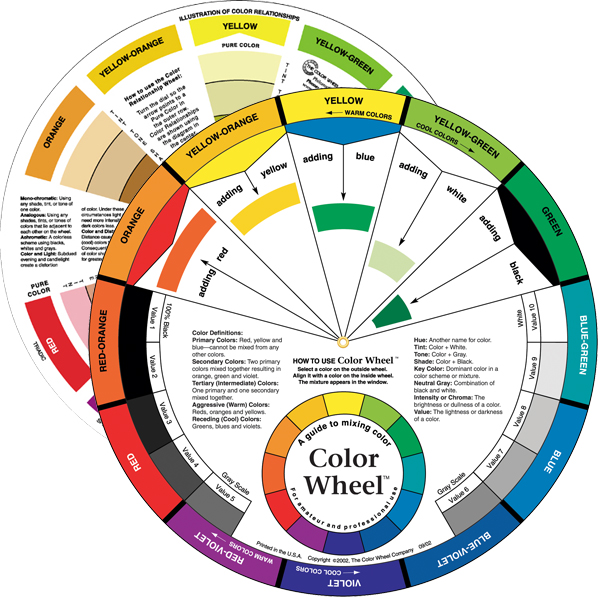

This includes mixing of blue-green and yellow-orange. But, tertiary colors need immense concentration and there is a need for mixing up primary and adjacent secondary colors. Instead, you can plan on lightening or darkening them by adding black or white color. Primary colors need no mixing! Once you have the primary colors in hand, there is no chance of mixing it with any other colors.The primary colors may include red, blue, and yellow. Basically, the color wheel contains 12 shades and follows the basic principle of color theory. Color Chart Understanding the color wheelThe color wheel is considered to be a chart that would reflect different colors that you probably see in a rainbow or the colors obtained when white light passes through a prism. This can help you carry the copy in your wallet and refer to colors as and when necessary. It is either a one page chart or available in the form of swatch books or even color- matching fans.Printable color chart templates appear to be very handy. They are also referred to as color reference cards which are defined as flat physical objects that come with a variety of color samples. What is a color chart?Firstly, it is vital for you to know the meaning of color charts. Now, there is no need of referring to a color as red or yellow, instead, you have possibility of using a number from the chart. With the help of a chart it is possible to describe the color of bromeliad parts. Basically, it is found that there are different shapes of a single color which are referred to with different names. Color is subjective, and each color represents different ideas.

Primary colors – red, blue, and yellow.Color chart- a brief explanationYou must have heard of color charts by now! Today, most companies are making use of charts to represent different objects. If they’re still having fun color mixing, have them paint 2 complementary colors next to each other on a piece of paper and notice what they look like. You can go way far into color theory if you desire, but this is a good introduction for your kids. It makes lots of sense once you see it in action. If you don’t order the clock kit from my Amazon link, make sure you buy a 3/4″ clock mechanism, or it won’t fit through the hole. Add the clock mechanism/hands onto the clock and slap a battery in the back before you hang and admire your clock.If paint seeped under the stickers, you can use gesso and a small brush to touch up the letters. Remove the stickers after the paint has mostly dried.Want to know what goes in the 6 remaining pie pieces? Tertiary colors! Hooray! They are made by mixing together the 2 colors on either side of them. Now you have the primary colors and the secondary colors painted in.Do the same with the blue and yellow and yellow and red. Paint that in the segment halfway between the blue and red on your clock face. Mix the red and blue together in equal amounts to get purple.Paint the primary colors so there are 3 empty wedges in between each primary color.Break out your paints and squeeze a dollop of each of the 3 primary colors onto your palette.Stick your number stickers on your clock, and make sure they’re pressed down thoroughly.Draw lightly if you want to erase these later, or you can keep them in. Use a straight edge and draw the pencil lines across the face of the clock.Mark dots at halfway in between the first dots.Mark a dot on the edge of the clock, and mark dots all around the clock edge at the measurement of the radius.
#BLANK COLOR WHEEL HOW TO#
Show your kids how to find the radius of a circle by measuring from the center to the edge of the circle. With that said, here’s how we measured the color wheel segments on the clock face: I really wanted this to be a project that’s accessible for kids as young as elementary age to familiarize them with the color wheel. Use two coats, letting them dry completely in between coats.įor this clock, we decided to not be perfectionists. Prepare your clock face for painting by priming it with gesso. They’re approximately 1 1/2″ high) Here are some similar stickers– maybe a little smaller than the ones I used. Number stickers (We got ours at Michael’s.Acrylic paint – we used Liquitex Basics.So do you know what is a perfect art project to incorporate into a clock? A color wheel! 12 numbers 12 colors. This one on Amazon is similar to the one we used. In fact, we have a few different sets of clock hands and an old Ikea clock floating around the house, but I didn’t get truly motivated until I found a blank wooden clock face at Michael’s. I’ve also been wanting to do a clock project for a long time. I’ve been wanting to do a color wheel for kids project.


 0 kommentar(er)
0 kommentar(er)
